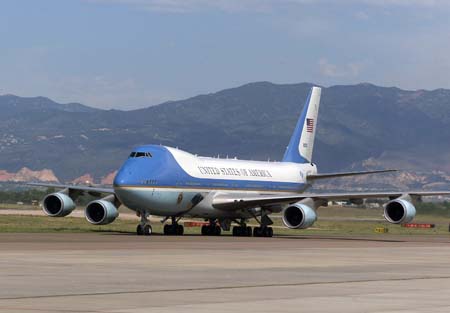The Air Force has launched an effort to find the next fixed-wing aircraft to serve as primary Presidential transport, replacing the Boeing VC-25s that have flown US Presidents since 1990. The VC-25, based on Boeing’s 747-200, is approaching the end of its 30-year design life, and, with commercial versions leaving airline service, the cost for parts and maintenance has increased. According to a Jan. 7 sources sought announcement, the Air Force conducted an analysis of alternatives, vying the cost of maintaining the current aircraft against buying a new one, and found that “replacing the VC-25 was the most cost-effective option.” The new Air Force One, like its predecessor, will be a highly modified commercial wide-body aircraft that USAF expects to see delivered—complete with communications, interior, and aerial refueling capability modifications—in Fiscal 2017, followed by a second and third aircraft in two year increments. The Wright-Patterson AFB, Ohio-based Aeronautical Systems Center, which is managing the Presidential Aircraft Recapitalization program, expects industry responses to its contractor capability survey by Jan. 28.
Air Force has launched an effort to find the next fixed-wing aircraft to serve as primary Presidential transport, replacing the Boeing VC-25s that have flown US Presidents since 1990. The VC-25, based on Boeing’s 747-200, is approaching the end of its 30-year design life, and, with commercial versions leaving airline service, the cost for parts and maintenance has increased. According to a Jan. 7 sources sought announcement, the Air Force conducted an analysis of alternatives, vying the cost of maintaining the current aircraft against buying a new one, and found that “replacing the VC-25 was the most cost-effective option.” The new Air Force One, like its predecessor, will be a highly modified commercial wide-body aircraft that USAF expects to see delivered—complete with communications, interior, and aerial refueling capability modifications—in Fiscal 2017, followed by a second and third aircraft in two year increments. The Wright-Patterson AFB, Ohio-based Aeronautical Systems Center, which is managing the Presidential Aircraft Recapitalization program, expects industry responses to its contractor capability survey by Jan. 28.
House, Senate Unveil Competing Proposals for 2026 Budget
July 11, 2025
Lawmakers from the House and Senate laid out competing versions of the annual defense policy bill on July 11, with vastly different potential outcomes for some of the Air Force’s most embattled programs.